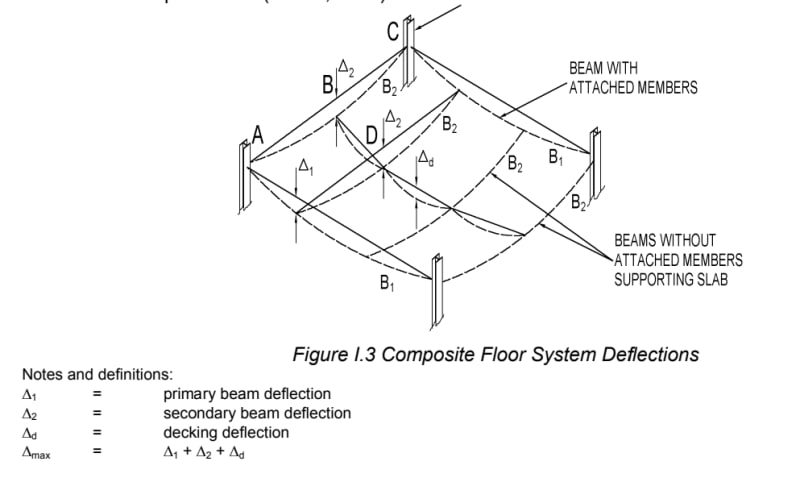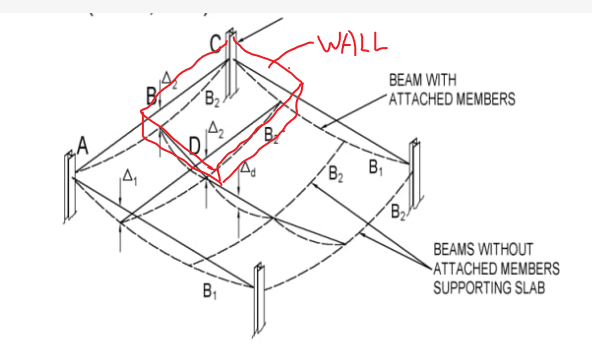Browen
Structural
- Jun 25, 2020
- 1
Hello all,
Novice structural engineer here, been lurking for a few years now. I could use some advice, as I may or may not be being gaslit by one of my colleagues.
Say I have a beam (steel in this scenario, but I don't think that's important) which is supported by girders at both ends, framing into the midspans of the girders. Do the deflection criteria for the beam (L/240 for total load or 1" is what I'm using) depend on the deflections of the supporting girders? For example, if the midspan deflection of my beam is 0.5" but the midspan deflection of the girders is also 0.5", do I not have any wiggle room with the beam since its compound deflection is 1"?
I understand one purpose of the deflection criteria is to prevent damage to the floor due to differential deflections of the underlying beams. For my above example, the differential deflection of my beam is 0.5", which is less than the 1" typical limit. Would I be correct in continuing to design based on differential deflection instead of compound deflection?
Thanks ahead.
Novice structural engineer here, been lurking for a few years now. I could use some advice, as I may or may not be being gaslit by one of my colleagues.
Say I have a beam (steel in this scenario, but I don't think that's important) which is supported by girders at both ends, framing into the midspans of the girders. Do the deflection criteria for the beam (L/240 for total load or 1" is what I'm using) depend on the deflections of the supporting girders? For example, if the midspan deflection of my beam is 0.5" but the midspan deflection of the girders is also 0.5", do I not have any wiggle room with the beam since its compound deflection is 1"?
I understand one purpose of the deflection criteria is to prevent damage to the floor due to differential deflections of the underlying beams. For my above example, the differential deflection of my beam is 0.5", which is less than the 1" typical limit. Would I be correct in continuing to design based on differential deflection instead of compound deflection?
Thanks ahead.




